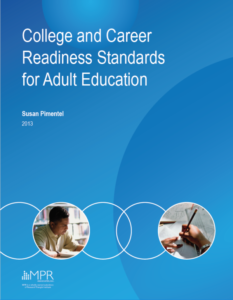Numeracy Resources
Instructional Resources
#MCTMequity – A Call To Action
5 Practices for Orchestrating Productive Mathematics Discussions
Balancing the Equation
CK12.org
Classroom Clock
CollectEdNY.org – Math
Common Core Sheets
Content Area Vocabulary
E-quip Math Webinars
Below you will find links to the Season 2 E-quip Math PD Series recordings. These webinars were hosted by ATLAS’s MN Numeracy Initiative (MNI), in partnership with the MN 2014 GED® PD Project, in 2014-2015.
ACCESSING RECORDINGS ON MACS: If you wish to access the recordings from a Mac computer, you’ll need to get the Windows Media Player plugin for Macs. This is a free download. Get Windows Media Player plugin for Macs >>
E-quip Math Webinars
Below you will find links to the E-quip Math PD Series recordings. These webinars were hosted by ATLAS’s MN Numeracy Initiative (MNI), in partnership with the MN 2014 GED® PD Project, in 2013-2014.
Each of these recorded webinars also included pre-work and post-work for participants to allow them to get the more out of the live webinar time. The available documents, links, and other resources are posted with each recording.
ACCESSING RECORDINGS ON MACS: If you wish to access the recordings from a Mac computer, you’ll need to get the Windows Media Player plugin for Macs. This is a free download. Get Windows Media Player plugin for Macs >>
Elementary Always, Sometimes, Never
ELL Math
Equitable Pedagogy: The Key to Students’ Mathematical Reasoning and Sense Making
Ever Wonder What They’d Notice?
Fraction Misconceptions – from Recovering Traditionalist blog
Getting Started with Effective Math Talk in the Classroom
Global Math Department
Great Estimations by B. Goldstone
How to Edit Your Math Pessimism
How to Learn Math
Ignite Videos – Math Forum
Interpreting Visual Information
Language of Mathematics
Levels of Knowing Mathematics
MATH Activities from March 31 newsletter article
Math Is Fun
Minnesota Council of Teachers of Mathematics (MCTM)
MTBOS or #MTBOS
National Council of Teachers of Mathematics (NCTM)
Numeracy Units: Beginning Level
PBS Learning Media – Math
Picture Yourself as a Stereotypical Male
Problem Strings
Purposeful Numberless Word Problems
Radical Equations
Rethinking How We See Mistakes
Season 1, Episode 2: Connecting and Interpreting Graphs and Functions
Season 1, Episode 3: Connecting Coordinates, Lines, and Equations
Season 1, Episode 4: Solving Quadratic Equations
Season 1, Episode 5: Finding Surface Area and its Related Dimensions
Season 2, Episode 2: Data, Box & Whisker Plots, Graphs of Central Tendency
Season 2, Episode 3: Ratios, Rates, Proportions, and Scale Factor
Season 2, Episode 4: Complex Geometry with New Formula Sheet
Season 2, Episode 5: Systems of Equality, Inequalities
Season 2, Episode 6: Differentiating Math Instruction in Complex Classrooms
Skillblox
Stay-At-Home Mandate
Students with Disabilities Can Do Math
The Best Way to Learn Math is to Learn to Fail Productively
The Problem with Math is English
The Story of Two Words and One Simple Tweak to Get Students Talking
Thinking Routines
Translating Word Problems: Keywords
Tweet Me, Maybe
Understanding the Rapid Spread of COVID-19 in Our Communities
Why Before How
Youcubed.org
College & Career Readiness (CCR) Math Standards
 Looking for more specific information about the College & Career Readiness (CCR) Math Standards? Check out the CCRS Math Resources section of the CCR Standards resource library!
Looking for more specific information about the College & Career Readiness (CCR) Math Standards? Check out the CCRS Math Resources section of the CCR Standards resource library!